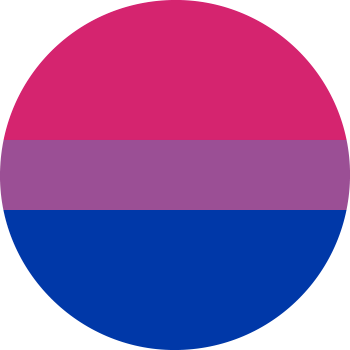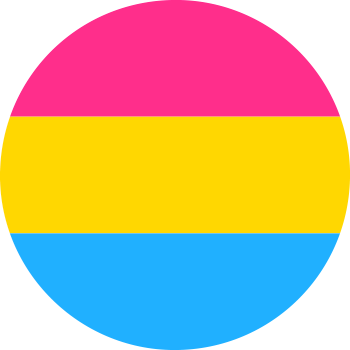At GPJ, we believe inclusion enables growth. Diversity fuels innovation. Equity ensures that every voice is valued and heard. When we show up as our authentic selves, we create beautifully authentic work.
As we’ve grown, we’ve learned that we need to be intentional in creating an environment that values each person and their unique background–race, gender, ethnicity, ability, orientation, religion.

Our identities, our work, and our agency are not static or one-dimensional, but ever changing and evolving. In that spirit, we continually evaluate how we’re supporting and recognizing our communities within, and engaging in our work with our clients, vendors and partners.
Each June, the LGBTQIA+ community celebrates Pride Month, bringing the rainbow flag forward from its original design by Gilbert Baker in 1978. In recent years, the rainbow flag has changed to showcase the inherent intersectionality of the LGBTQIA+ community. Designed by non-binary artist Daniel Quasar (pronouns xe/xyr), a chevron with brown and black bars, and pink, white and blue bars, now places BIPOC and Trans representation in the front of the field.
Flags are created and added to the Pride family in the spirit of inclusion and self-discovery. There are multiple flags representing some of the many reasons why a person is part of the LGBTQIA+ community and may choose to use a flag. This Pride Month, we celebrate our LGBTQIA+ community by expanding our awareness and recognition of the personal identities these flags represent.

Philadelphia Pride with Inclusive Colors
The traditional Gay Pride Flag, with 6 colors, is the one you’ll see most often. It was designed by artist Gilbert Baker in 1978, in San Francisco. This flag can operate as a general flag for the LGBTQIA+ community, but it’s not necessarily all inclusive. So in 2017, Philadelphia added brown and black to the top of their flag to spotlight the importance of including queer people of colour in the community. This flag was famously donned as a cape at the 2018 Met Gala by American actress, producer and screenwriter, Lena Waithe.

Transgender Pride
In 1999, the Transgender Pride Flag was created by transgender activist and veteran, Monica Helms. Blue and pink represent boys and girls while white represents those who consider themselves having a neutral or undefined gender. This flag was first flown in 2000 at the Pride Parade in Phoenix, Arizona.
In 2019, queer, nonbinary artist, Daniel Quasar, started a Kickstarter campaign to combine both renderings of the Gilbert Baker flag and Monica Helm flag to create the Progress Pride Flag. The flag’s black and brown stripes represent marginalized LGBTQIA+ communities of color, community members lost to HIV/AIDs and those currently living with AIDS. The artist reshaped the colors into a chevron to represent the need for forward movement. Here’s a great article on how this redesign represents the diversity in the LGBTQIA+ community.

Nonbinary Pride
The Genderqueer Pride Flag was created by Marilyn Roxie in 2011 to represent all non-binary and genderqueer community. But as this flag became synonymous with genderqueer, the non-binary community felt that they were not represented by the flag, thus a non-binary flag was born! The Nonbinary Pride Flag was created by Kyle Rowan in 2014. The four horizontal stripes (yellow, white, purple, and black) represent those whose gender falls outside of and without reference to the binary.
The flag’s intention is not to replace the Genderqueer Pride Flag, but to be flown along side it.

Lesbian Pride
There is no actual one official lesbian flag but the one pictured has become increasingly the most common over the past decade. The colors from top to bottom represent gender non conformity, independence, community, unique relationships to womanhood, serenity and peace, love and sex, and finally femininity. Across all iterations of this flag, purple is represented. Purple (or violet) has long been associated with lesbianism. The violet flower historically has been used by lesbians to indicate themselves to others in the lesbian community.

Bisexual Pride
In 1998, Michael Page created this flag to spotlight bisexual people within the LGBTQIA+ community. He saw that the Bi+ people felt less of a connection to the rainbow and wanted to give the community symbols they could rally around. The color scheme was borrowed from another bisexuality pride symbol created by Liza Nania called Biangles, overlapping blue and pink triangles, which created a third lavender color. These overlapping colors represent attraction to both, or all, sexes symbolized by the pink and blue.
The lavender represents the queerness of bisexuality and references the Lavender Menance in the 1970s.

Pansexual Pride
This flag was created to differentiate between the bisexuality flag. It was created on the internet, sometime around 2010 and has gained popularity. The creator is unknown. The colors in the flag are pink (attraction to those who identify as female), yellow (attraction to those who identify as genderqueer, non-binary, agender, androgynous or anyone who doesn’t identify on the male-female binary) and blue (attraction to those who identify as male).

Intersex Pride
This flag was unveiled on July 5th, 2013 by creator Morgan Carpenter of Intersex Human Rights Australia. The flag has quickly gained popularity among intersex communities and organizations due to its unique design. Purple and yellow are used because they are seen as gender neutral colors. The circle represents wholeness, completeness and the intersex people’s potentiality.

Asexual Pride
This flag was created after Asexual Visibility and Education Network (AVEN) held a contest on its forum boards to create a pride flag for those who identify as asexual. The winning design was posted on June 30th, 2010 by AVEN user “standup.” The flag represents a spectrum of many asexual identities under its umbrella including asexuality, grey-asexuality, demi-sexuality, non-asexual partner and allies.

Abrosexual Pride
This flag was created by Mod Chad in 2015. It is unknown why they chose these colors specifically but it represents those whose sexuality is changing or fluid.

Ally Pride
This flag was created in the late 2000s, but the specific origin is unknown. It represents people who are not apart of the LGBTQIA+ community but support equal civil rights, gender equality, LGBTQIA+ social movements, and challenges homophobia, biphobia, transphobia and any discrimination against the LGBTQIA+ community.
We hope you’ll enjoy flying these flags as a sign of mutual respect, understanding, and recognition of the shared human experience that unites us all.
To learn more about the many Pride flags and the meanings behind them, check out this article.

Thanks to our LGBTQIA+ employee resource group, OPEN (Original Perspectives, Excluding None), for their continual work and support of this post. OPEN is a coalition of LGBTQIA+ and allies within the GPJ family, celebrating our unique points of view and finding unity within our differences. You can learn more about OPEN here.